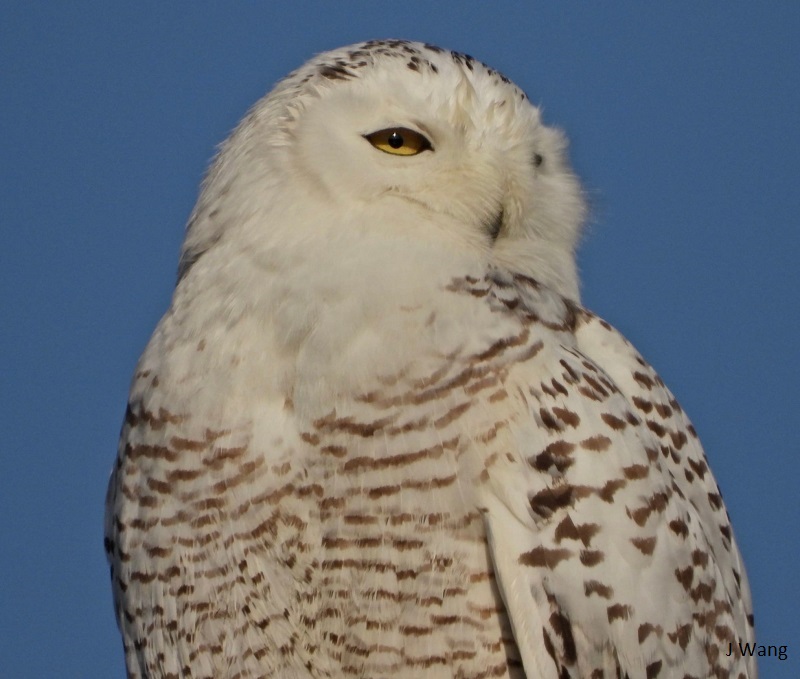


First Printed:
February 27, 2000
The gulls had gathered for the night. I watched from my car as they glided in and circled, braking with wings beating briefly, then alighting on the ice of the river. This expanse was a safe haven for the nightly roost, where the birds could crowd in, preening and fixing feathers before the darkness fell.
My thoughts were gathering too, or perhaps it was wool, as I reveled in the evening scene. Suddenly the scene changed. Act two of the night began with a shape fluttering by the window. I peered carefully through the gloom, and there was the owl, perched on a branch of a small tree not ten feet away.
It was rather small, but intensely alert, turning its head back and forth with quick starts and stops, like a mechanical toy. It was not a toy, and any mouse would learn that quickly if it ever showed its head from under the snow-covered grasses. The tufts on the head were flattened, but still obvious enough to reveal this bird as a screech owl.
These owls are strictly nocturnal, as their bigger cousins are, the barred and great horned owl. The snows are now deep enough to stress these birds a bit, but somehow they manage, even if the female has to stay on the delicate embryos while the male hunts. This is the fate of the great horned owl, big and fierce enough to catch the large prowling animals of late winter, such as skunks and possums or even screech owls.
The barred owl is a deep woods bird, finding the mice and squirrels of the forest. They sometimes visit a bird feeder at night, hoping for a rodent grown fat and lazy on left over seeds. Rarely, one will sit much of the day near a feeder, its black eyes staring out from the round handsome head covered in brown and white. There is nothing like the stare of an owl, even at a distance.
Some owls are very active during the day (diurnal), and the Allen Bird Club went looking for these on a trip to the coast last week. When not enjoying the many kinds of ducks we were seeing, we were praying for raptors, especially owls. These were owls from the arctic, come to our tundra-like coastal marshes to prey on and sample the southern cuisine.
Early in the morning we had visited Nelson's Island in Ipswich, hoping for the short-eared owl. Instead, there were rough-legged hawks and harriers, the hunters who shared the same habitat, taking the day shift, while the owls took the evening. Although these owls are accustomed to both day and night hunting, their eyes are still tender enough to make them avoid the shattering sun of full day on the white snow.
By late afternoon we were on the other side of the same marsh, in the Parker River National Wildlife Refuge. The snowy, the most prized owl of all, had been reported here earlier that afternoon, and when we heard about it, we reversed our course to turn back and hunt for it.
No white owl was now present in the tops of the beach bushes, and our hearts fell. We headed down the road, studying the dunes on one side and the marsh on the other, where a dull setting sun made viewing difficult. We had to pick out this owl against a background of snow and ice as well. The three-car caravan crept along the road, and we scanned each side with hope as fading as the day.
Myles and Kathy, a couple in our van, had never seen the snowy, so it was even more sought after for them, one reason we had returned to try. Myles was in the front on the marsh side, binoculars bearing on the vast expanse, while I was despairing in the back. "I see an owl," he said with some surety.
We leapt out as the car stopped and swiftly we set up scopes. There was the snowy owl, that yellow-eyed stare surveying the frozen landscape, scratching for a meal as we filled our eyes and laughed with satisfaction. He flew around twice, spooking the ducks in the river, for he is big enough to threaten them. The bird was an adult male, as white as snow, earning the first-place ribbon of our two-day trip.
